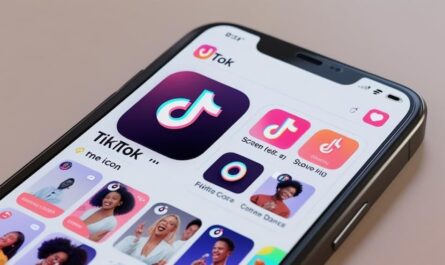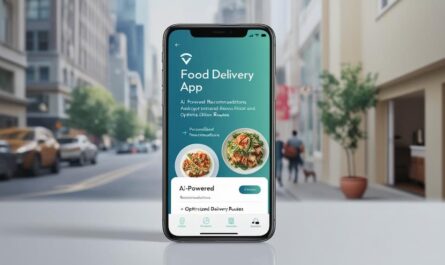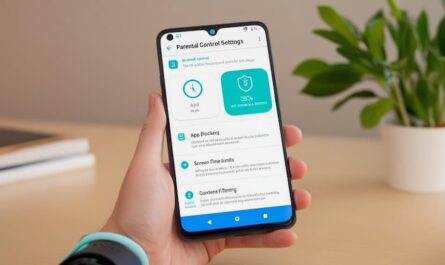Is your home being taken over by things you don’t need or use anymore? Many people feel the same way too; not just you alone. You might also wonder, is there an easy way to declutter and make some extra cash while you’re at it? The answer is a resounding yes! U.S. marketplace app scene is booming, offering simple platforms to sell our stuffs. But with lots of options, where should you start?
We’ve explored notable U.S. marketplace apps for selling stuff, highlighting their features, fees, and usability. You’ll find practical advice, and insights into payment and shipping options. Meanwhile, we also touch on some important tips to improve your listings and navigate selling process smoothly.
How do I know a marketplace app that stands out for selling stuffs
Yes you want a platform that reaches a bigger audience, it should offer a user friendly experience. Reliable payment methods and low fees are important too. Note that when choosing marketplace app to sell your items, several factors should come into play. First, it’s important that the marketplace app supports your product type, whether it’s electronics, clothing, collectibles, or household goods. Meanwhile, features like local selling options, shipping flexibility, and seller protections can influence your success.
For example, some marketplace apps focus on local sales only. They allow you to meet buyers in your neighborhood. This can be a convenient way and cost-effective. Others provide nationwide reach with shipping options, which is great if your items appeal to a wider audience. And you should consider how much control you want over pricing. Think about negotiations too. Some platforms facilitate direct buyer-seller communication more than others.
What are the best U.S. marketplace apps to sell my stuff
Amazon
They are the giant in e-commerce world, boasting over 310 million active users. It’s a notable choice if you’re selling a wide variety of items, from everyday household goods to maybe niche gadgets. Amazon’s Seller app makes listing quiet easy, allowing you to upload photos, write detailed descriptions, and manage inventory efficiently. One important feature is Fulfilled by Amazon (FBA), where Amazon handles storage, packing, and shipping for you. This services reduces your logistical burden. But, costs can accumulate, such as referral fees and shipping charges, so you should include these in your pricing strategy.
Mercari
Ever heard of Mercari? They offer a flexible and user friendly platform that appeals to both casual and professional sellers. It’s great for clothes, electronics, home goods, and collectibles. You can upload up to 12 photos per listing and choose from various shipping options, including discounted labels. Mercari takes a 10% commission and a 3% payment fee, which is quite fair. Note: The marketplace app’s simplicity and seller analytics can help you track your sales and adjust your approach accordingly.
OfferUp
This platform focuses on selling to local customers and is designed primarily for mobile devices. It’s perfect if you want to sell items like furniture, electronics, or vehicles within your neighborhood. You can list items quickly, negotiate prices directly with buyers, and choose between local pickup or shipping. Local transactions are free to list, but shipped items incur around 12.9% fee. OfferUp also offers listing boosts to increase your item’s visibility, which can be helpful when competition is high.
eBay
eBay remains a powerhouse for selling almost anything, with a massive global audience and over 1.7 billion product listings. It’s especially useful for electronics, collectibles, and clothing. The marketplace app lets you auction items or set fixed prices. Fees include around 10% final value fee and 2.9% for PayPal transactions, plus a small insertion fee for listings beyond your free quota. eBay is known for its good reputation and wide reach, this make it a reliable option.
Facebook marketplace
Notable for its local focus and zero listing fees makes Facebook easy to connect with buyers nearby. It’s ideal for quick sales of furniture, appliances, and miscellaneous household items. The platform integrates with Facebook’s social network, which can build trust between buyers and you. But, since transactions are often in-person, you should always prioritize safety when meeting buyers.
Poshmark
They specializes in clothing and accessories, offering you prepaid shipping labels and virtual selling events. It’s popular among fashion sellers and buyers looking for gently used or designer items. Poshmark takes a flat fee for sales under $15 and 20% for sales over that. The app’s social features encourage sharing and community engagement too, which can boost your sales.
Some marketplace apps like Etsy cater to handmade and vintage items. Depop focuses on trendy and vintage fashion. This is especially popular among younger audiences. Each platform has its own fee structures. They have different audience demographics too. You should choose based on what you’re selling. How you want to interact with buyers should also guide your choice.
How fees and payment options can affect your selling experience
Yes, knowing the fees is important because they somehow impact your earnings. For example, Amazon charges fees that usually fall between 6% and 15% to its referrals, depending on the product category. Mercari’s 10% commission plus 3% payment fee means you should price your items accordingly. OfferUp’s free local listings are attractive, but the 12.9% fee on shipped items can add up if you sell frequently.
Payment options also matter. Most marketplace apps support direct bank transfers, PayPal, or in-app wallets. Some, like Mercari, release funds after the buyer confirms receipt, which protects both parties. Meanwhile, platforms like Facebook Marketplace often rely on cash or external payment methods, so you should be cautious and clear about payment terms.
How can I successfully sell on these marketplace apps
You can improve your chances of selling by focusing on a few key areas. Clear, well lit images from multiple angles help buyers see what they’re getting. In your description, be honest and detailed about the condition, size, and features. Research similar items to set competitive prices that attract buyers but don’t undervalue your stuff. Respond quickly and politely to inquiries, it builds trust. For shipping, offer flexible options when possible, and package items securely. Note: Use relevant terms in your titles and descriptions to improve search visibility.
Turning clutter into cash, for instance with Mercari, needs patience but does work. Sarah, a freelance graphic designer, found herself with a closet full of clothes she rarely wore. She decided to try selling on Mercari after hearing about its ease of use. She took time to photograph each item carefully and wrote honest descriptions, mentioning any wear or defects. She priced items slightly below similar listings to attract buyers quickly and she sells off.
By using Mercari’s cheap shipping labels, she saved money and skipped the trouble of shipping it herself. Within three months, Sarah sold over 40 items, earning more than $600. She credits her success to consistent listing updates and prompt communication with buyers. Sarah’s experience shows that with patience and attention to detail, you can make a nice profit from your unused items.
Where you can find more information and get started
For selling physical items, you can download any marketplace app. These include Amazon Seller, Mercari, OfferUp, eBay, or Facebook Marketplace. You can find them on their official websites or app stores. Each platform provides detailed guides on registration, listing, and payment processes.
If you’re interested in selling digital products, websites like Empire Flippers or BusinessesForSale.com offer marketplaces and resources to help you with the process.
Note: These marketplaces offers a practical way for you to declutter and earn extra income. Choosing the right platform according to what you selling, and applying thoughtful strategies can make the process smooth and rewarding. Both for local sales and nationwide reach, there’s a marketplace app for you to use.
Remember, your success depends not only on the platform alone. It also depends on how well you present your items and engage with buyers. So, take your time, be honest, and watch your unused stuff find new homes and put money in your pocket.
For more information on how you can earn, check out this post on: Apps that can help you earn $100 a day.



